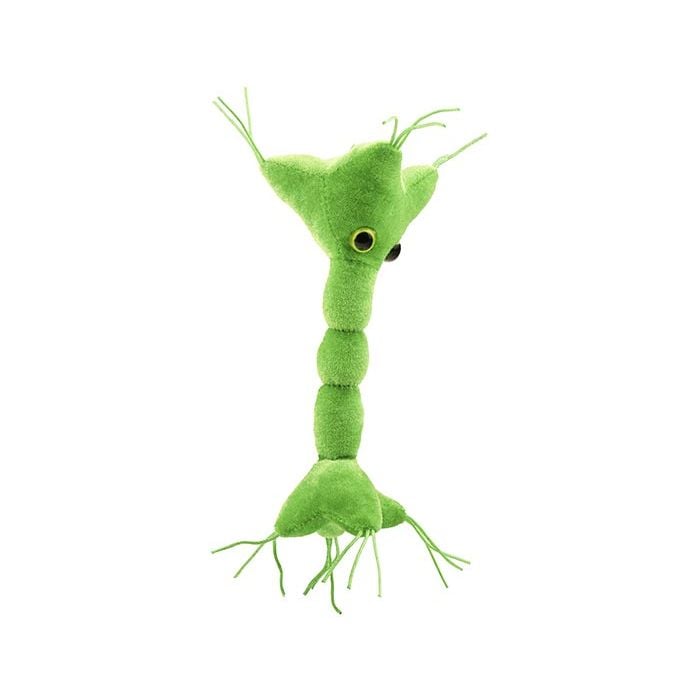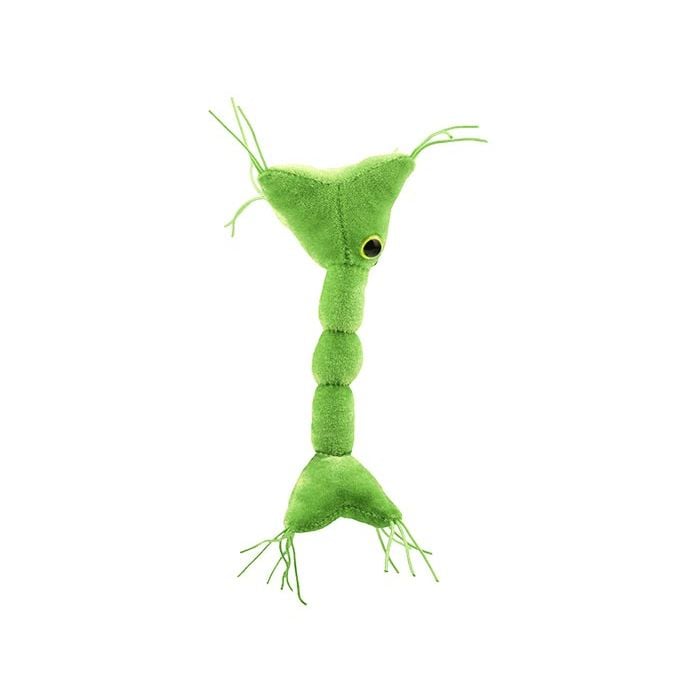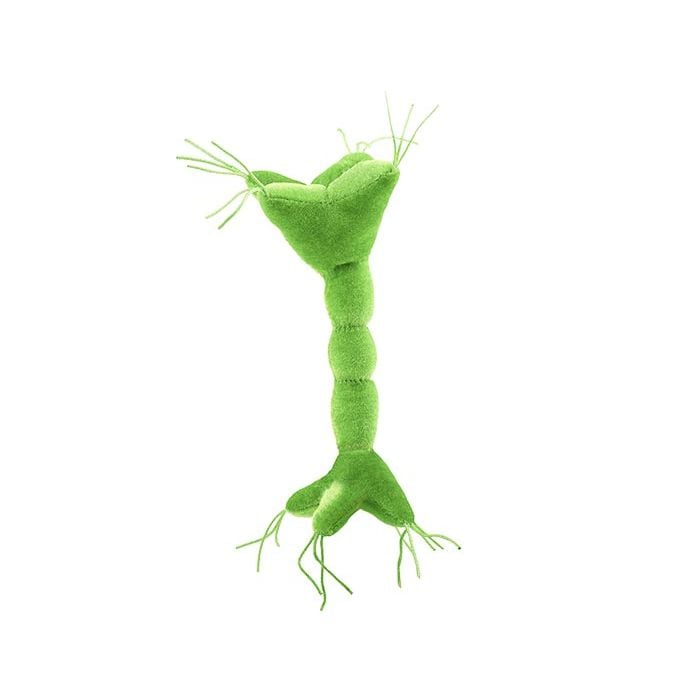Nerve Cell (Neuron)
Nervous? Relax, trust your impulses and learn all about your nervous system and cells of the body with this adorable plush nerve cell.
Features detailed stitching, high quality materials and an educational printed card with fascinating facts about our incredible neurons. Soft, cuddly and unique educational tool for students, doctors, therapists and patients that want to learn more about spinal cords, brains and neurology.
Fun memorable gift for brain science enthusiasts and anyone with a healthy sense of humor!
Size: 18 x 8 x 8cm
Product Details
Additional Information
| Sizes | Giantmicrobes are based on actual microbes, cells, organisms and other critters, only 1,000,000 times actual size! Gigantic (GG) 40-60cm XL (XL) 25-38cm Original (PD) 12-20cm Minis (MM) 5-10cm each Keychain (KC) 5-10cm with clip |
|---|---|
| Materials | Plush from all new materials. Stuffed with polyester fiber fill. Surface washable: sponge with water & soap, air dry. |
| Packaging | Each plush microbe includes a printed card with fun, educational and fascinating facts about the actual microbe or cell. |
| Safety | Every product meets or exceeds U.S. and European standards for safety. For ages 3 and up. |
All about Nerve Cell (Neuron)
FACTS: There are a lot of different kinds of nerve cells. Motor neurons shock our muscles into action; sensory neurons in our eyes and ears are stimulated by light and sound, on our nose and tongue by chemicals for smell and taste, and on our skin by touch; and an untold number of other interneurons transmit impulses within the central nervous system and the brain. But they all work in a similar way.
When the dendrites on the dendric tree on the body of a nerve cell receive a sufficiently strong signal, it irresistibly triggers an electrical impulse inside the cell that travels down the long thin axon (which is protected by a fatty myelin sheath). When the impulse reaches the axon terminal at the base of the nerve, special signaling chemicals are released that float across the gap (or synapse) between one nerve cell and the next – and the process continues.
Most nerve cells are tiny. But some are as long as your leg, literally: they extend all the way from the base of the spine to the tips of your toes! But unlike most cells, nerve cells cannot normally reproduce – so if they get injured, loss of feeling and even paralysis can result. (Abnormalities in the neurotransmitters or the nerve cell itself can also lead to conditions such as Alzheimer’s disease, Parkinson’s disease, or multiple sclerosis.)
But don’t get nervous: nerve cells are shockingly reliable. And if you’re still feeling jittery, it’s probably the neurotransmitters that are to blame anyway. So wipe off your sweaty palms, take a deep breath, close your eyes, listen to some music, smell something sweet . . . and relax. Your nerves will help you do it.
| Description |
Nerve cells are designed to transmit messages throughout the body. As part of the nervous system, these connect the brain, sensory organs, and the spinal cord together and to the rest of the body in order to maintain control and communication. This communication is achieved through electrochemical signals between nerve cells. These cells are structured with a cell body with branching dendrites, which receive messages, and a long tail, called an axon, that sends messages. This is a funny gag gift for a nervous friend who has a test coming up. Types: Sensory Neurons: bring information from the sensory organs, like the eyes, to the nervous system. Motor Neurons: control the body by sending messages from the nervous system to the body’s muscles and glands. Interneurons: send messages within the Central Nervous System and are the most plentiful type of neuron. |
|---|
| Name | “Nerve” comes from the Greek word that means tendon, which shows the similarity and mix-up between tendons and connective tissues and nerves. |
|---|
| Actual Size |
Diameter can vary from 0.004mm to 0.1mm whereas the length can range from less than an inch to many feet. For the cell body with the long axon, imagine a kitten playing with a piece of yarn that is 15 miles long. Quantity: 1 trillion in the body, 100 billion in the brain. |
|---|
| System | Nervous System |
|---|
| History |
~1700 BC: first written record about the nervous system. ~500 BC: Alcmaeon of Croton dissected an optic nerve. ~200 AD: Galen concluded that nerves all radiated from and connected to the brain. |
|---|
| Fascinating Facts |
Octopus Brain: has 300 million neurons. Line up all the Neurons: and it would be 600 miles long. Nerve Cells in Life: Nervecell: a Death Metal Band. Nerve: a 2013 psychological drama depicting a man having a breakdown over his deceased wife. |
|---|













